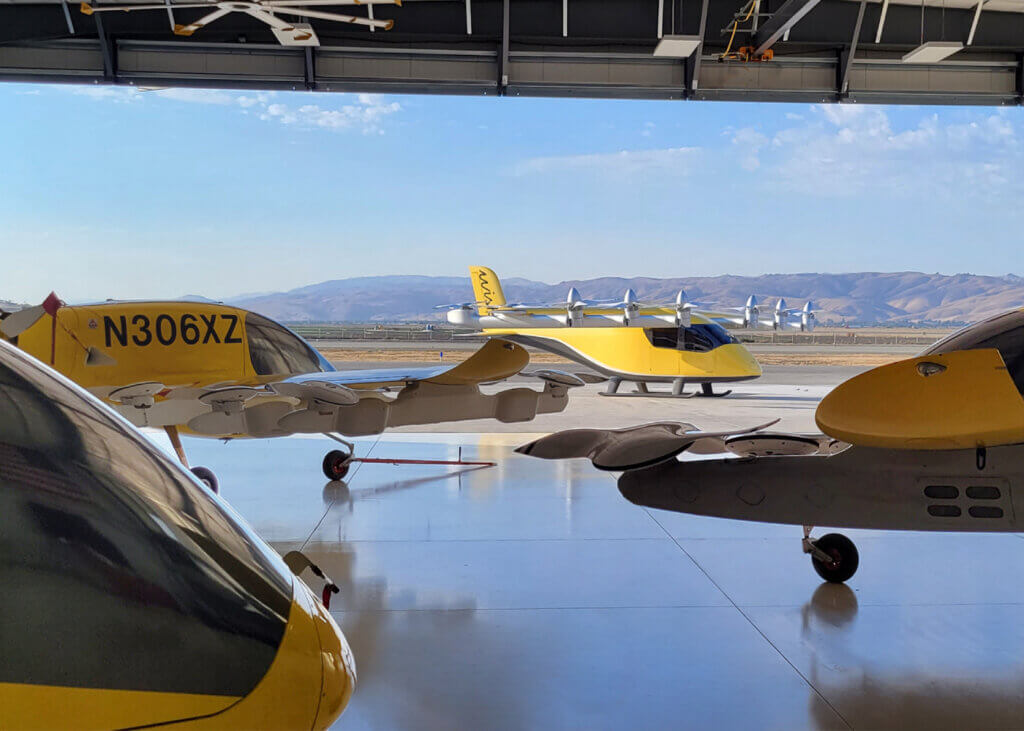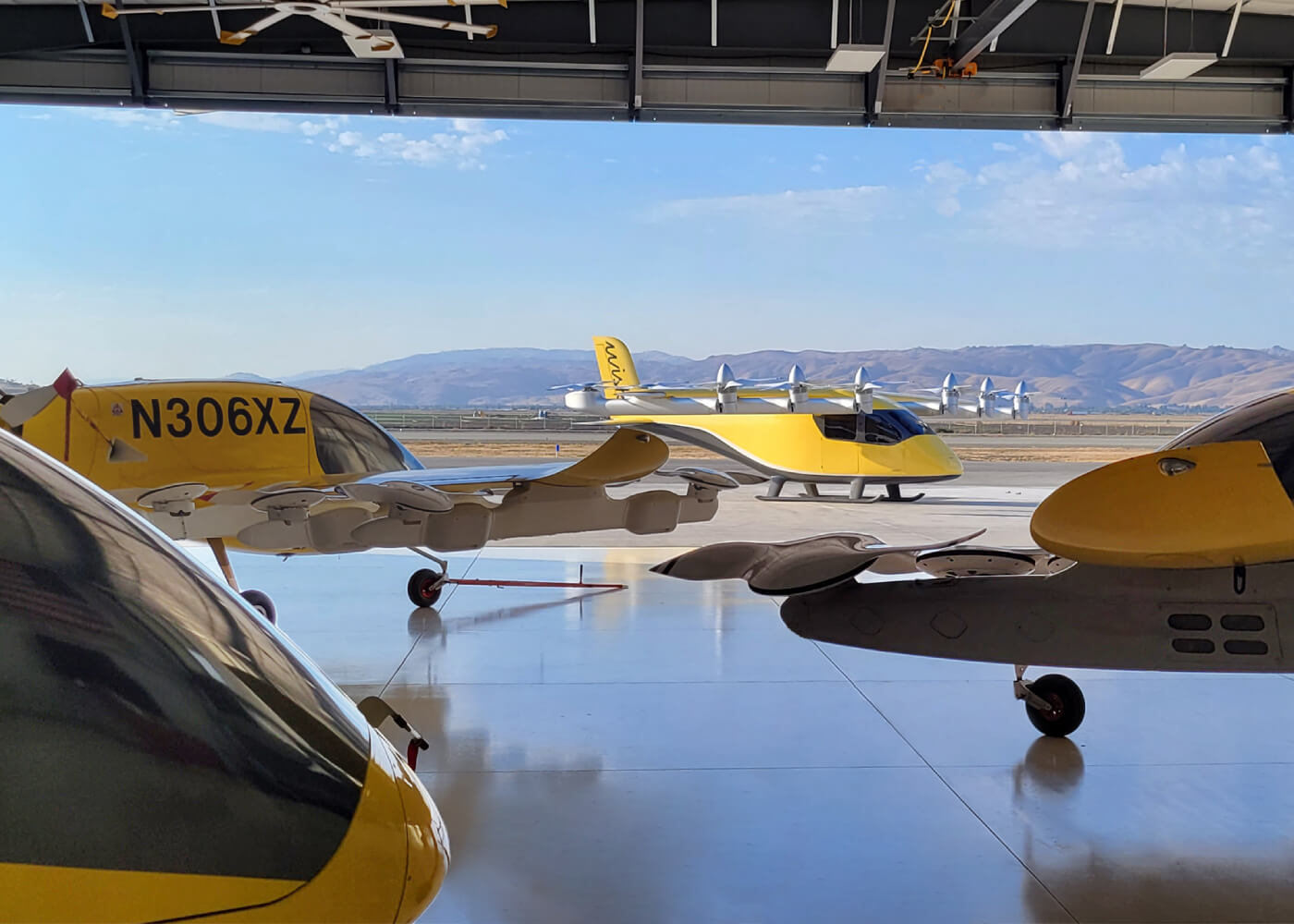A safety management system (SMS) has become an essential component of today’s commercial aviation industry. This concept started taking shape in the 1990s as it was felt at that time that an improvement was needed on the quality management model that had in turn been adopted from the manufacturing industry. SMS was intended to move from a reactive approach to a more proactive stance on safety.
The International Civil Aviation Organization (ICAO) adopted the associated Annex 19 in 2013, and the Federal Aviation Administration (FAA) now mandates that all certificate holders under 14 CFR Part 121 develop and implement an SMS. Currently, non-14 CFR Part 121 operators can choose to join the FAA’s SMS voluntary program (SMSVP) to harness the benefits of SMS’s top-down and organization-wide approach to safety.
Toward the end of last year, California-based Wisk Aero became the first advanced air mobility (AAM) company to join the voluntary program. Vertical reached out to Jake Streeter, Wisk’s SMS and operations safety manager, who talks about the safe integration of eVTOLs into the airspace and the company’s decision to join the SMSVP in its unique position as an autonomous eVTOL developer and future operator.
This interview has been edited for length and clarity.

Alex Scerri: Jake, can you give us some background on your work in the safety domain?
Jake Streeter: I am a physicist by training and through some starts and stops, my career took a direction toward aviation. I worked at the FAA for several years, starting at the SkyWest Certificate Management Office [CMO], learning about operators and their implementation of SMS in the early days of this concept.
From there, I moved to FAA headquarters in Washington, D.C., where I was branch manager for safety analysis in the Office of Accident Investigation and Prevention [AVP]. That job allowed me to get a good overview of safety policy, particularly SMS policy, and an understanding of how accidents and incidents occur.
I also had a role as an adviser at ICAO, where I represented the U.S. on the Safety Management Panel. Leaving the FAA, I joined Uber Elevate in 2019 as director of safety for the UAS program after which, I moved to Cruise AV as a senior manager for safety where I was tasked with building its SMS. I then came to Wisk in June 2021 for a position as a lead for system safety but then I had this opportunity to build an SMS yet again.
Alex Scerri: Can you briefly describe what an SMS is and specifically, the FAA’s SMSVP?
Jake Streeter: I won’t go into the ICAO textbook definition but essentially, SMS is a safety framework built on four components: safety policy, safety risk management [SRM], safety assurance [SA] and safety promotion. These are combined with safety culture, which I think might be the most important element.
When the FAA published 14 CFR Part 5, they only applied that to Part 121 operators, but they also recognized that there are other operators and other lines of business that wanted to implement an SMS and its framework, so they opened up the voluntary program.
Rather than create a new set of rules, you essentially follow the same certification process in Part 5 for the SMSVP. Essentially, the FAA leverages a lot of the same tools found in the Part 121 SMS for the SMSVP Part 135 and original equipment manufacturers [OEMs] programs. There has been a lot of work over the years since the Part 5 rule came out for implementing the same type of controls and applying the same type of regulations, on a voluntary basis.

Alex Scerri: Why did Wisk feel the need to join this program?
Jake Streeter: Safety is our leading value at Wisk. SMS provides the standardized framework that we can apply throughout the company, and we believe the voluntary program is an excellent means to ensure that we are designing and implementing a safety program which can exceed current safety requirements.
Alex Scerri: Can you explain why you planned to implement SMS across the company and not just for operations?
Jake Streeter: We are implementing an enterprise-wide SMS as a fundamental tool to manage safety. Limiting the scope to only operations safety simply does not meet the safety or business needs of our company. It would be impractical to have multiple SMSs, and full SMS integration is possible here at Wisk since we are a relatively young company. We think we can implement it in a way where it evolves and matures as the business grows.
Alex Scerri: What are the considerations when implementing an SMS for an operation with autonomous aircraft compared to crewed aircraft?
Jake Streeter: That’s a great question. Developing and operating an autonomous aircraft obviously provides a lot of new opportunities for SMS and safety innovation. For example, autonomy provides an opportunity to monitor safety performance across a wider spectrum, not just what went wrong, but also what worked well or was neutral across every single flight that will be operated.
The increase in captured data volume will provide us an increasingly better opportunity to understand the behaviors associated with autonomous flight, which in turn, will lead to safer products and services. You can think of that as a continuum. You’re building and operating the product and feeding all that information through to help support your safety analysis.
Alex Scerri: Safety is the stated number one priority for many aviation companies. How does one match that with the requirements of a commercial operation?
Jake Streeter: With the expansion of Part 5 and the associated Notice of Proposed Rulemaking (NPRM) published on Jan. 11, where the FAA proposes to expand the applicability of the SMS mandate, many more aviation companies would be required to do business with an SMS in place. As companies meet those requirements, they will have an even greater sense of validation that safety is their number one priority.
Alex Scerri: Do you think there is opportunity for more open sharing of safety data between different OEMs, operators, etc., to share lessons learned?
Jake Streeter: Absolutely, 100%. I think we have many great examples to follow in the aviation safety industry such as the Commercial Aviation Safety Team (CAST) and the General Aviation Joint Steering Committee (GAJSC). Although we currently don’t have a ton of data to share, we could still work on safety communication and share ideas regarding standards development. In that way, we can have a platform to match those industry groups that came before us, so we don’t need to reinvent the wheel.
Alex Scerri: Can you share any lessons from the implementation of your SMS that could benefit other OEMs planning to do the same thing?
Jake Streeter: You probably won’t be surprised based on my background, but I think that one of the most important lessons learned is to ensure that data is standardized. That is the key to developing a successful safety program, whether you are using SMS or another framework. Taking time to develop those terminology and taxonomy standards is extremely useful when designing and implementing an SMS. Through standardization, you can communicate more effectively, and this standardization goes on to be used in each of the SMS components.

Alex Scerri: What metrics do you have in place to monitor effectiveness of your SMS?
Jake Streeter: When you’re talking about validating the SMS, there are a couple ways to look at that. If we look at commercial aviation, we can look at past programs like the FAA’s Aviation Safety Information Analysis and Sharing [ASAIS] program and CAST, with the data sharing you asked about before. We can see how Part 121 operations have managed to drive down accident numbers using similar metrics and safety enhancements. Those programs have shown time and time again that data capture, reporting and sharing can bring down accident rates to the lowest figures on record. We want to model our work after them for AAM.
We are also proactively measuring safety as we work on the design and development of our next-generation aircraft. Ours is not a wait-and-see approach. We are actively applying the SRM and SA processes to maximize the effectiveness of our SMS program and the safety of our products and services.
Some of the concepts and tools we are developing to accurately answer this question are in the works, and we look forward to sharing our strategies in the near future.
Alex Scerri: Do you see any drawbacks or challenges in implementing SMS?
Jake Streeter: The challenge is really trying to reshape the model to standardize data across the organization. In system safety, they’ll say they have behaviors, functions, functional failures etc., while in operations safety, they speak of hazards and controls, but really those terms have a lot of interoperability. It’s just a matter of harmonizing that information, so you need to decode your business processes, understand what the different aspects are, and then figure out how you intertwine those together.
Alex Scerri: Do you have any message to share with the AAM ecosystem?
Jake Streeter: One of the most important things to get across is that Wisk is here to collaborate across industry and government to provide for the safe integration of eVTOLs into the airspace system. Creating and working on safety teams together with industry and government internationally, not just here in the U.S., is another.
We look forward to being able to share information and data when we have it, with the proper protections in place. We don’t look at this as Wisk being a single entrant, but that we are a community. We can build a safety community together and we have a lot to bring to the table to help show how we would demonstrate safety not just to the industry and government, but also to the public to continue building confidence in AAM.









